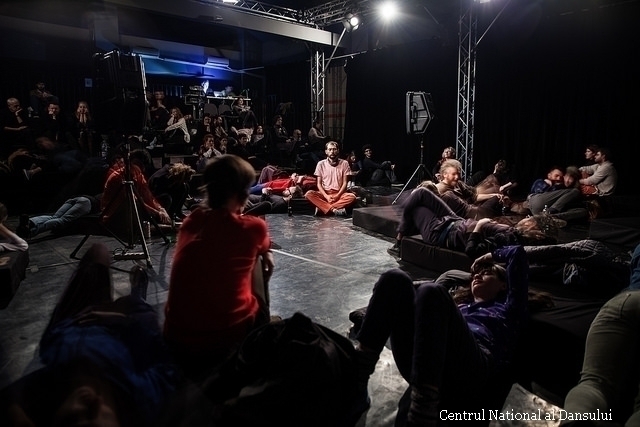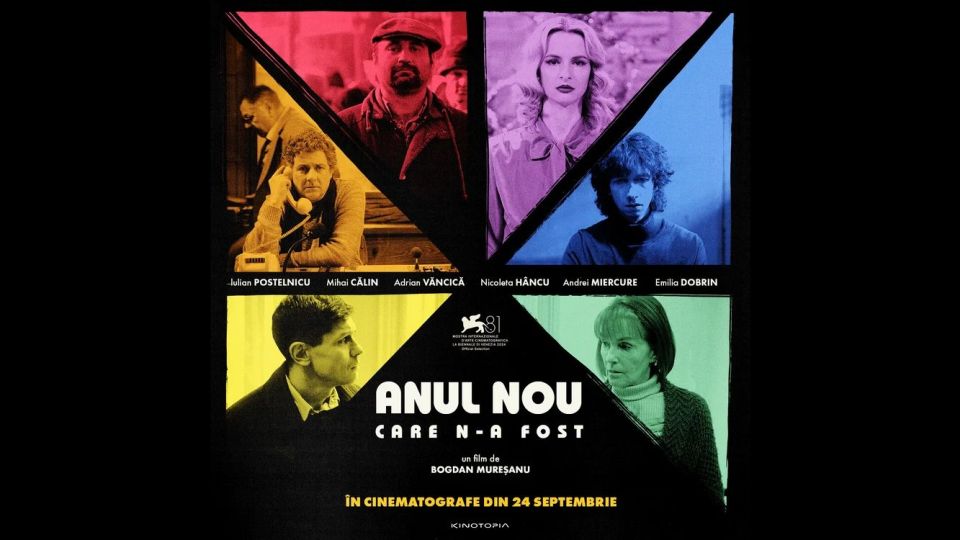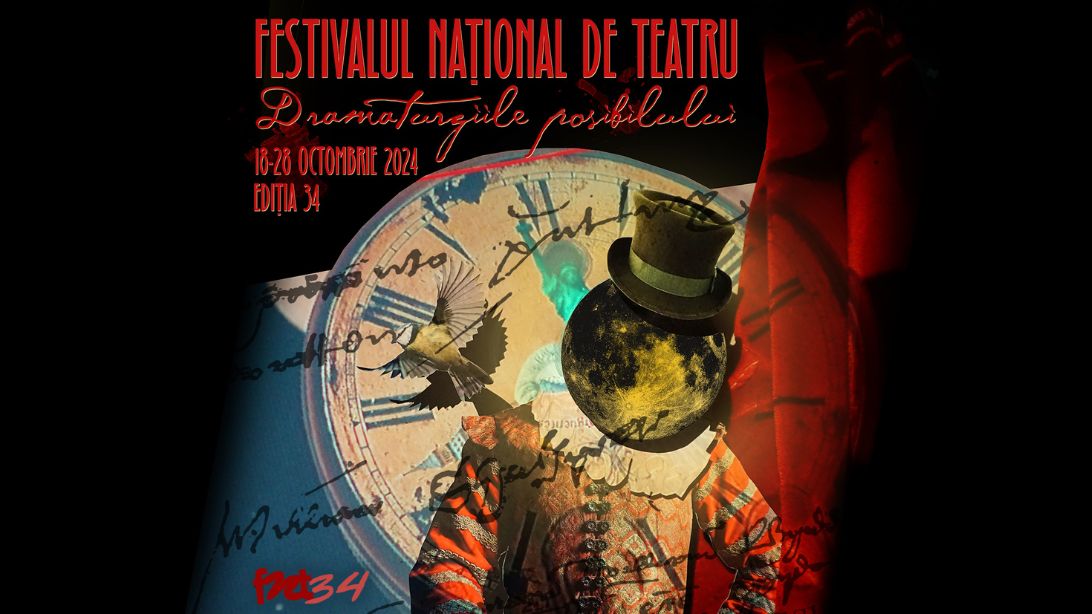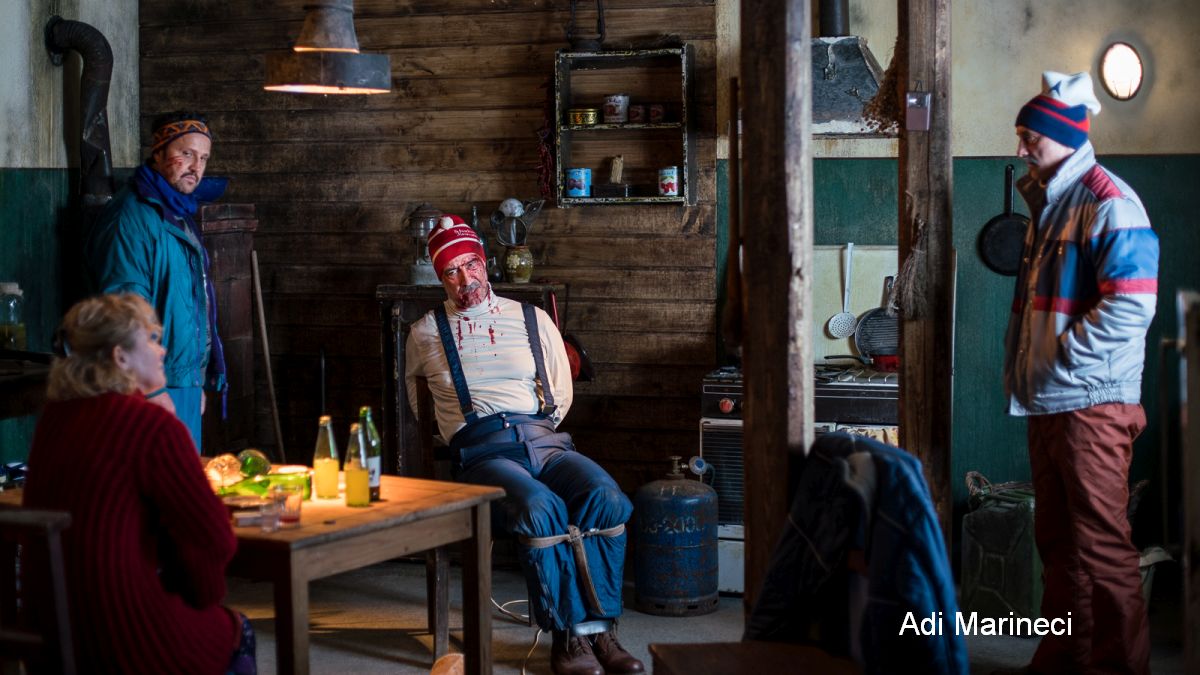National Dance Center Hosts Performance dedicated to Isidore Isou
The National Dance Center in Bucharest has recently hosted a national premiere dedicated to the Romanian-born French artist Isidore Isou, the founder of Lettrism

Luana Pleşea, 11.03.2017, 02:00
The British mezzo-soprano Loré Lixenberg and French composer Frédéric Acquaviva each presented a musical performance inspired from Isidore Isous works.
Born in the northern Romanian town of Botosani in 1925 and settling in France after World War 2, in 1945, Isidore Isou is still little known in Romania, which is precisely why this event was staged in Bucharest, and will be continued with other projects as well.
As for the staging of the event at the National Dance Center in Bucharest, curator Igor Mocanu explained: Isidore Isou, just like any other artist with diverse, if not all-encompassing, interests, put together a manifesto and wrote a number of theoretical texts on dance. As a counterpoint to the jumps specific to German Expressionism in the early stages of the dance avant-garde of the 1920s and 1930s, he came up with the choreography of falls, of plunging bodies. Weve been toying with the idea of doing something that focuses on this element of Isous work, at the National Dance Center in Bucharest. Apart from their interests in contemporary art, be they sound-related or not, they are very good analysts of Isidore Isous work. Actually, Frederic owns an impressive collection of Isous books and works.“
The performance dedicated to Isidore Isou started with the screening of a two-minute excerpt from a documentary made by Orson Welles and titled “Around the World in Saint-Germain des Prés. The documentary was filmed on location at the Fischbacher Bookshop in Paris in 1955, and the footage features Isidore Isou and Maurice Lemaître, alongside Jacques Spacagna and Orson Welles.
In her performance, mezzo-soprano Loré Lixenberg included a few works created over 1947-1984. “Weve chosen a selection of works which go across quite a large timeframe, from 1945 to 1984. So Ive chosen a work, which was one of his earliest works, Neige/Snow. The genius, part of the genius of Isou, is that he takes a situation he was in and transforms it into a form, rather that going for the theatricalisation of it. So its Neige, then Im also going to perform some of his soundless poems, which are about gesture and implication. Its fascinating from the point of view of being a performer, because its such rich material, its such a wealth of different sounds there, and I also love the disassociation of sound from meaning, its really on…maybe quite a shallow level is very good fun. It feels very nice in my mouth, its got good mouth feel.“
Towards the end of his life, Isidore Isou took a closer interest in music, and the second part of the event in Bucharest included a piece from that very period of time. The piece is Symphony no 4, Juvenal, composed in 2001 and arranged by Frédéric Acquaviva in 2003. The French composer met Isou in the last ten years of the latters life and together they wrote a couple of symphonies orchestrated by Acquaviva.
Frederic Acquaviva has also described Isidore Isous music works: “He left Romania just after the war and arrived in Paris in 1945 and his idea was to do Lettrist poetry, which was a mix between poetry and music, so thats what later most people say when they use the term sound poetry. But in fact Lettrist poetry is a kind of poetry that uses only the voice and the movements and sounds that you could do with your body, so its a kind of body sound and its much in advance because its a totally abstract poetry. His music is basically like,…it sounds also a bit primitive because its also with kinds of loops. Its very bizarre. Juvenal is the fourth symphony because we did together the five symphonies and this one, because I orchestrated it with a choir, and so I would say that you dont really know which time you are, which country and thats quite interesting and its quite specific.
Composer Frédéric Acquaviva has already organized a series of events in Europe dedicated to Isidore Isou, and is set to continue his projects. Frédéric Acquaviva: “Ive done many things already, because Ive done like several exhibitions already, Ive done also several books on him and Ive done a book with the Romanian Cultural Institute in Stockholm about his hypergraphic novels, it was also done, some fantastic things in the novel., but also we are here in the Center of Dance, hes also done some fantastic choreographies, that are like these 40 years beyond this time, because when he wrote in the 50s is what you get in contemporary dance in the 90s in France, for example, and.. so, right now Im working on several projects on him, but more specifically, the first big monograph on his paintings and artworks. So I hope its done and will be published this year and, by, bizarrely, its Les Editions du Griffon who published the first monograph on Brancusi in the 50s.






























